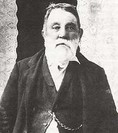AnOwlCalledSage wrote: ↑Wed Mar 25, 2020 5:15 pm
exiledscouser wrote: ↑Wed Mar 25, 2020 3:51 pm
Thanks for that The Observer. Now you’ve got me looking with great suspicion at my carefully hoarded loo roll collection.
There are no specific COVD19 studies published apart from that undertaken on a quarantined cruise liner. However, that was around whether the RNA could be detected rather than whether it was an active pathogen.
Most research has extrapolated from similar viruses and has it surviving from 3 hours to 4 days on cardboard. It's down to the desiccant effect and toilet paper is meant to be absorbent! If moisture is extracted from infected droplets then the virus degrades and becomes inactive.
I may not have a PhD, so this may not mean a scholarly paper. However, I have inter-generational knowledge of the wood fibre business so I can give you my opinion of the supposed shortage of tp and how what we have is probably (not) infected.
Ok, here we go, and for the purposes of this exercise, 1000 pounds equals one ton, because that's the way it's been done forever, along with rods and chains in the forestry business.
You have obtained a great deal on tp and have filled your basement with 2700 rolls. That's because a roll of standard quality tp, including cardboard liner weighs 6 oz for shipping purposes. Do the math, that's 1000 pounds=1 ton, and in volume enough to fill a shipping container. Not exactly economical to ship any great distance, especially from china.
So we have a solution: one ton of NBSK pulp (the raw material) is shipped and it nicely occupies a volume exactly 4 foot on a side. The conversion mill turns that pulp into your tp using Yankee rollers or TAD. Short summary of process: yankee rollers have a very thin film of pulp sprayed on a roller heated to 300 F or so to extract the water; TAD uses a vacuum to extract the water and then the material is air fluffed with 400 F air to fluff it. I can't think of any virus that can handle that.

BTW, if you factor in the shipping costs, it means the conversion mill should be located within 500 miles of the end user. The whole mill probably operates with less than 100 employees.
So where does this NBSK pulp come from? Although some of it is starting to come from South America, you generally need a source of spruce or pine so do your geography. The pulp mill has to be located close to the fibre source: one ton of pulp requires 2.2 to 2.5 tons of wood chips and 25 to 50 tons of water! And how much do they knock out? A modern paper machine typically produces 350,000 tons per year and under union rules that haven't changed since the 1930's is operated by the grand total of eight men. Not exactly a shortage of pulp and absolutely nothing living can withstand the boiling/digestion/bleaching with nasty chemicals to produce the pulp.
Summary, until the system breaks down entirely and the zombies are wandering the streets there will never be a shortage of tp and so long as what you have purchased is in the original packaging it's absolutely sterile. As an aside, years ago when I was tracking certain fungal disease on trees our collection methodology was to clip off the samples with sterilized clippers, wrap them in tp moistened with distilled water, and then enclose in a standard zip-lock plastic bag (they're sterile too because of the blowing process) to take back to the lab.

